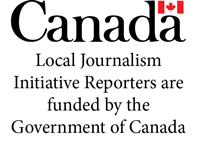To the editor,
The black swan theory refers to unexpected events, that in hindsight people realize there had been warning signs. What questions are we willing to ignore? Ultimately, what will end up in the proposed deep geological repository (DGR)? Many people are quick to answer that only the Canadian spent fuel bundles come from the CANDU reactors. But what possibilities are covered by the phrase Adaptive Phased Management?
In November 2020, the Nuclear Waste Management Organization (NWMO) was handed the task of being in charge of a plan for all of Canada’s radioactive waste (as announced in a Nov. 16, 2020 press release from the NWMO). Since the Ontario Power Generation (OPG) repository for low- and intermediate-level waste was voted down, will they add that to the proposed high-level DGR?
In the most recent NWMO five-year strategy they waved the adaptive wand and now they warn us that the DGR size may increase 38 per cent, going from 5.2 million bundles to 7.2 million (NWMO Annual Report 2020). How large will it ultimately end up being?
In the NWMO’s triennial report titled “Moving towards partnership,” Laurie Swami, president of the NWMO, talked about working with the industry to make sure the DGR was ready for new concepts in nuclear technology and its possible waste.
Last month at the Arctic Development Expo, Joe McBrearty, president of Canadian Nuclear Laboratories (CNL), was promoting the concept of developing Small Modular Reactors (SMRs) as a way to bring power to the north. As part of that presentation he was asked about the nuclear waste produced by SMRs. His response was that the waste would be shipped south to a “long term geological depository far away from the Arctic.”
At the Jan. 12 South Bruce council meeting, Swami was asked if the decommissioned reactors could end up in the proposed DGR. Her response was, “should it come to pass in the future that it would become appropriate, it would be open to dialogue and go through the same process to determine willingness.” Does she mean the same “no promise to let the people vote method” to determine willingness?
The OPG, the Centre for Canadian Nuclear Sustainability (CCNS), CNL and SNC-Lavalin have all signed an agreement to work together on the decommissioning of CANDU reactors around the world. What will that mean?
A CBC article from April 1, 2021, brought to light that former Prime Minister Jean Chretien was involved in talks with foreign countries about importing nuclear waste. Chretien feels that since Canada is a top supplier of nuclear fuel it is only proper that we become the ultimate guarantor for its safe storage.
Enmax, a company from Calgary, recently purchased the American company Versant Power. That purchase came with a decommissioned nuclear plant and its silos of spent fuel bundles. If it is now owned by a Canadian company will that make it Canadian waste?
What will the final adaptive phased plan actually be? We just don’t know. How many warning signs can be ignored before you can no longer claim you didn’t expect that outcome? How can such a monumental decision be made without giving each resident a voice?
Our risk. Our choice. Only a referendum can fairly determine community willingness.
Michelle Stein
Teeswater



